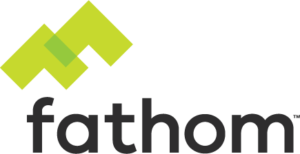the cookieless future is not quite here. yet.
Google has delayed the full deprecation of cookies for the third time since 2020. In January 2024, they deprecated 1% of third-party cookies, and we have seen effects from that. Our position doesn’t change: We need to prepare for the (inevitable) cookieless future.
managing third-party cookie deprecation in healthcare
- In January 2024, Google Chrome deprecated 1% of third-party cookies. This small percentage represents 32M users.
- While the rest of advertisers and data providers are contending with the loss of cookies for the first time, healthcare advertisers and systems are in their second year of operating without pixels or tracking.
- Healthcare systems are well-positioned to adapt to change based on learnings from the past two years.

what options for cookieless targeting do health systems have?
contextual targeting
Contextual targeting is placing ads on web pages based on the content of those pages rather than on user behavior or profiles. This approach ensures relevance, maintains privacy and is done without cookies.
Contextually targeted ads are more likely to engage users because they are relevant to the content they appear alongside. For health systems, information about healthcare services, treatments, and products can reach individuals seeking health-related information, leading to higher engagement rates and better campaign performance.
private marketplace deals
Private Marketplace (PMP) deals offer health systems a strategic avenue to reach their audience. These deals involve a more controlled, invitation-only marketplace where publishers and advertisers purchase and sell premium ad inventory programmatically.

“Google’s cookie deprecation is a moving target. We expect cookies wont be fully deprecated until Google has a privacy-safe tracking solution to replace them.”
claire wirtanen
PMPs offer a targeted approach without relying heavily on personal user data. By selecting inventory based on the content and the publisher’s audience demographics, health systems can reach their desired audience based on interests and needs related to health and wellness without needing personal data collection.
second-party data
Second-party data, essentially first-party data shared between trusted partners, offers a unique blend of specificity, relevance, and compliance that suits the healthcare industry’s privacy and data use standards.
Second-party data transactions are characterized by high trust and transparency between parties. This strategy prioritizes the quality and relevance of data over sheer volume. For healthcare systems, this means access to high-quality data sets that are immediately applicable and impactful for their patient engagement strategies, reducing the noise often associated with broader data sets.
Learn how we recently overcame targeting limitations with a leading health system.
